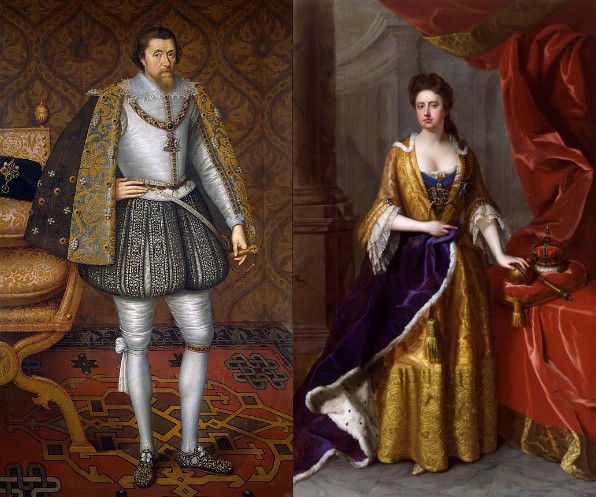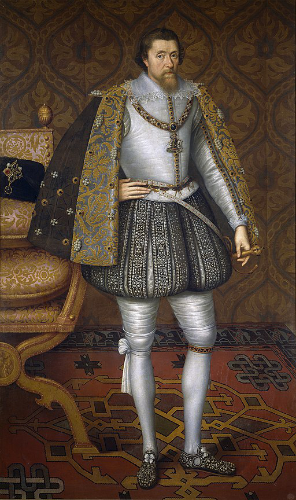20th October 2019
Today in 1604, James I proclaimed himself King of Great Britain. He had been king of Scotland as James VI since he was an infant, and he had come to the English throne in 1603 as James I. With his ascension to the English throne, the two crowns had been combined. But this was a personal union – legally the two countries remained separate, with different parliaments, churches, laws and customs. They just happened to share the same monarch.
From the start of his English rule James made it clear this was something he wanted to change. He was well known to be a firm believer in ‘the divine right of kings’ – whereby the authority of the monarch came directly from God, and the king was the natural father of his people. So it was obvious to him that both of ‘his’ countries should be united as ‘Great Britain’, with one king, one church, one parliament and one set of laws.
James made a passionate case to his English Parliament in 1604, pointing out how similar Scotland and England were ‘in language, religion, and similitude of manners’. He compared being a king to separate countries as polygamy:
‘I am the husband, and all the whole isle is my lawful wife; I am the head, and it is my body; I am the shepherd, and it is my flock. I hope therefore that no man will be so unreasonable as to think that I that am a Christian King under the Gospel, should be a polygamist and husband to two wives; that I being the head, should have a divided and monstrous body; or that being the shepherd to so fair a flock… should have my flock parted in two.’
But both the Scottish and English parliaments were unmoved by his arguments. Even the name of ‘Britain’ was unpopular – there were fears of a loss of identity and the English did not want to lose the ancient name of England. They were also worried about Scottish influence, while the Scottish themselves feared they would become marginalised if a union were to happen.
Despite the lack of progress, James still declared himself King of Great Britain and this title was used on proclamations, coins, letters and treaties in both England and Scotland. He also gave orders for a British flag to be created which bore the combined crosses of St. George for England and St. Andrew for Scotland. The result was the first Union Jack -–Jack being a shortening of Jacobus, the Latin version of James. This flag was amended again in 1801 to include the red saltire of St. Patrick to represent Ireland and became the Union Jack as we know it today.
However despite James’ enthusiasm, by 1607 the project had failed – the English Parliament would only allow the personal Union of Crowns in which England and Scotland remained largely separate, and so James’ hope to rule the kingdom of Great Britain never transpired.
It wasn’t until 1707 that the Treaty of Union united England – which included Wales – and Scotland into the Kingdom of Great Britain. The first monarch to be recognised as the ruler of Great Britain was Queen Anne – James’ great granddaughter and the last of the Stuart monarchs.
Images: King James I of England, attributed to John de Critz, c.1605, P01954, Prado National Museum, via Wikimedia Commons. Queen Anne, by Michael Dahl, c.1702, NPG 6187 © National Portrait Gallery, London.

